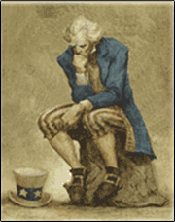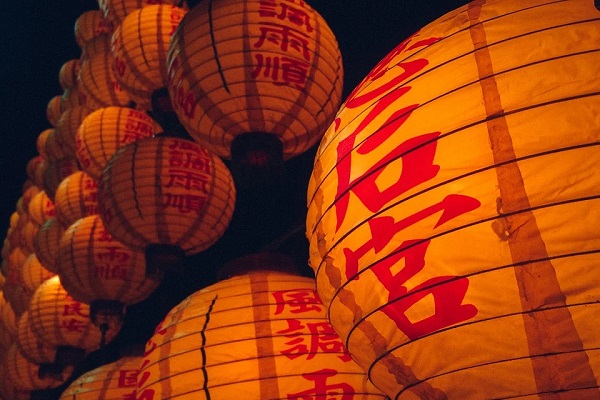
–>
November 14, 2022
The comforting belief that democratic freedoms have history on their side and will eventually prevail everywhere has always been tinged with wishful thinking. World events of the past two or three decades have shown that we can no longer take these things for granted. Universal human rights, democratic practice and the rule of law have powerful enemies, and China under the Chinese Communist Party is arguably the most formidable.
‘); googletag.cmd.push(function () { googletag.display(‘div-gpt-ad-1609268089992-0’); }); }
It is with these words — direct, forceful, and ominous — that Clive Hamilton and Mareike Ohlberg‘s well researched book Hidden Hand: Exposing How the Chinese Communist Party Is Reshaping the World begins. In an earlier work, Silent Invasion, Hamilton had warned of the deep reach China had gained in Australia by routing huge donations to political parties through Chinese businessmen, and of how Australian institutions had been “penetrated and shaped by a complex system of influence and control overseen by agencies serving the Chinese Communist Party.” In Hidden Hand, Hamilton and Ohlberg show how China is deploying that insidious strategy worldwide to shape the world in its own image.
In 1989, CCP leaders were shocked by the Tiananmen Square protests and the fall of the Berlin Wall, the latter leading to the breakdown of the Soviet Union. So they gave razor-sharp focus to ideological security, imposing political education (or indoctrination at school) and preventing the entry of hostile ideas. The U.S. was painted as a formidable enemy with nefarious plans to dominate China. Ordinary Chinese came to believe they are in a life-or-death struggle. The home front thus secured, over the next few decades, the CCP embarked aggressively on achieving tianxia, or world domination.
Culturally, the Chinese think and communicate in imagery; embrace subjectivity; and prize skill in allusion, subterfuge, doing by not doing, and winning without fighting. So it is not surprising that CCP strategists, well versed in Sun Tzu and weiqi, have worked indirectly to win Western countries from within rather than through direct aggression from outside. Their well planned campaign of influence, backed by substantial economic resources and technological advances, has masterfully manipulated the Western elite, media, entertainment, universities, NGOs, and think-tanks to control the narrative on China. Businesses and politicians have been won over with deals, creating dependencies that China has expertly exploited.
‘); googletag.cmd.push(function () { googletag.display(‘div-gpt-ad-1609270365559-0’); }); }
Hidden Hand is outstanding because it gives a detailed map of China’s tactics. A sampling: Wai yuang nei fang (round outside, square within, or flexible in strategy, firm in principles); xiao ma da bangmang (big help with a little badmouth, or allowing some criticism by friendly forces so they gain credibility); yi shang bi zheng (using business to pressure governments); nongcun baowei chengshi (using the countryside to surround cities); and difang baowei zhongyang (from the periphery to the center). With numerous examples of how such tactics have been used, the authors hope to shake the West out of its complacency.
They warn that China isn’t the Chinese people; it is the CCP, for the people have been indoctrinated or forced into submission. Foreigners fail to recognize the many incarnations of the party, which is segmented into work groups for different spheres of influence. For example, the United Front Work Department (UFWD) is responsible for guiding overseas Chinese and suppressing dissident voices. The International Liaison Department (ILD) is charged with influencing political parties and developing links to NGOs in target nations. Chinese friendship associations, and even businesses, focus on building influence networks at the local level. Behind them all, always exerting control, is the party, its officials double-hatting and double-plating to fool the West.
Beijing, the authors write, has made an art form of studying the centers of influence and power in each country. Elites in business, academia, politics, think-tanks, media, and politics are carefully targeted. This has ensnared successive U.S. administrations. Even President Donald Trump, who initiated a trade war with China and tried to block the CCP’s inroads into America, found his efforts thwarted. Senate majority leader Mitch McConnell, his wife Elaine Choi (secretary of transportation), Wilbur Ross (commerce secretary), Steve Mnuchin (Treasury secretary), Gary Cohn (director of the National Economic Council), White House senior adviser Jared Kushner, and Trump’s daughter Ivanka — all had strong business interests in China.
In Europe, the CCP has insinuated itself into the highest levels of decision-making. Hamilton believes that the 48 Club, founded in 1954 by British communists, has been “grooming” leaders in the U.K. They are so entrenched in the influence network that there’s no extricating Britain from Beijing’s orbit. Such networks have long thrived in other European countries, too, so they look past China’s human rights violations and territorial aggression.
China has also co-opted Big Business, Wall Street, and financial institutions in America and Europe. Big Business sees China as a market. Finance firms often hire the red aristocracy — children of CCP leaders — in the hope of gaining business but leaving themselves open to espionage and influence. They have invested billions of dollars from pension funds in Chinese companies, compounding China’s leverage. When President Trump took on China, the globalist billionaires of Wall Street pressured the White House, prompting trade adviser Peter Navarro to call them “unregistered foreign agents.”
Beijing devotes significant resources to industrial and state espionage, tapping into overseas Chinese communities — professionals, business people, students, and even tourists — to recruit agents of influence and spies. Under the Thousand Talents program, initiated in 2008, China sent its brightest to obtain Ph.D.s from American universities and either bring back knowhow or take on top jobs to gather intelligence for China’s agencies. Today, China leads in A.I.
‘); googletag.cmd.push(function () { googletag.display(‘div-gpt-ad-1609268078422-0’); }); } if (publir_show_ads) { document.write(“
The authors quote a National Endowment for Democracy report that says that when China speaks of soft power, it always means sharp power that furthers its worldview. To this end, China has been spending $10 billion yearly to create its own CNN — a “flagship media [outlet] with strong international influence.” Meanwhile, the CCP partners with foreign media to place its own content, using persuasive techniques, incentives, and threats. But it’s a one-way street: China remains closed to foreign media. Similarly, China has gained unidirectional influence in academia through the notorious Confucius Institutes and by funding programs at cash-strapped foreign universities in the spirit of “academic exchange.” Of course, the three Ts — Taiwan, Tibet, and Tiananmen — are censored.
The list of China’s successes through coercion — soft and hard — runs long. Most Western countries now treat Taiwan as a part of China. As the second largest contributor to the U.N., China has managed to keep Taiwan out of the U.N. since 1971. The WHO excluded Taiwan from meetings during the pandemic, and the International Red Cross has not admitted Taiwan’s Red Cross Society. Many Western democracies now have extradition treaties with authoritarian China, so dissidents abroad are sent home to be punished. Some are kidnapped or return after their families are threatened. So the world doesn’t often hear of China’s human rights violations.
Hamilton and Ohlberg say that China’s most ambitious Trojan horse is the Belt and Road Initiative (BRI) project. The project draws on a phrase popularized by Xi Jinping — “new type of international relations,” ostensibly a cooperative, win-win approach. In fact, it has robbed poorer nations of sovereignty and resources and pushed them into debt traps. The plan always was, in the words of the PLA Navy, to “meticulously select the location, deploy discreetly, prioritize cooperation and slowly infiltrate.” As of 2019, over 60 countries, including 18 E.U. countries — two thirds of the world population — had signed on. Driven by a debt crisis, Italy, the third largest economy in the E.U., too joined the project. With CCP-linked companies investing in roads, ports, dams, airports, railways, energy networks, and other infrastructure across the globe, the vulnerability is obvious.
Even so, the authors believe it’s not too late. Despite short-term costs, open societies can end unrestrained engagement with China. But politicians, businesses, and influence groups must first break free of the Chinese net in which they have entangled themselves over three decades.

Image: tookapic via Pixabay, Pixabay License.
<!– if(page_width_onload <= 479) { document.write("
“); googletag.cmd.push(function() { googletag.display(‘div-gpt-ad-1345489840937-4’); }); } –> If you experience technical problems, please write to [email protected]
FOLLOW US ON
<!–
–>
<!– _qoptions={ qacct:”p-9bKF-NgTuSFM6″ }; ![]() –> <!—-> <!– var addthis_share = { email_template: “new_template” } –>
–> <!—-> <!– var addthis_share = { email_template: “new_template” } –>





